Youth Sports

How can the media be used to increase participation in youth sports programs ?
The media can be used to increase participation in youth sports programs by creating awareness, generating interest, and providing information about opportunities available. Strategies include collaborating with local TV and radio stations for PSAs, utilizing social media platforms for short videos and infographics, live streaming sporting events, conducting interviews with coaches and athletes, creating online directories of sports programs, and hosting Q&A sessions and webinars. By leveraging the power of the media, we can inspire more young people to engage in sports and enjoy its numerous benefits.

What are the long-term effects of youth sports on mental health ?
Youth sports can have both positive and negative effects on mental health, including increased self-esteem, improved social skills, and reduced stress levels. However, pressure to perform, overtraining, injuries, bullying, and dependence on sports for identity can also have negative impacts. It is important for adults involved in youth sports to be aware of these potential effects and take steps to foster the positive ones while mitigating any negative impacts.

How can we create more opportunities for youth to participate in sports in rural areas ?
Participating in sports is crucial for a child's development, but rural youth often face challenges in accessing sports facilities and programs. To create more opportunities for youth to participate in sports in rural areas, local governments and organizations can build infrastructure, provide equipment and facilities, train coaches and volunteers, organize competitions and tournaments, and promote sports education. By addressing these issues, we can encourage more children to engage in physical activities, develop their skills, and lead healthy lifestyles.
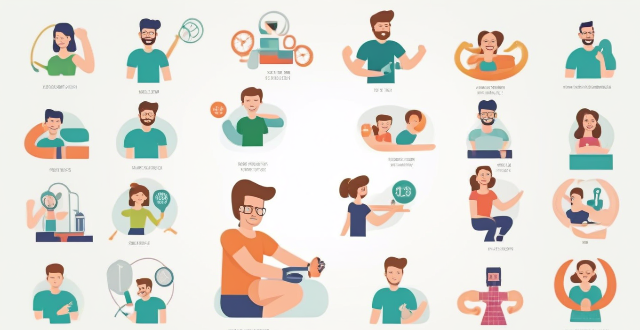
What impact does sports culture have on youth development ?
The article discusses the impact of sports culture on youth development, highlighting its benefits in physical health, mental well-being, social skills, and emotional growth. Participating in sports activities helps young people improve their fitness levels, motor skills, self-esteem, stress management, teamwork, leadership skills, cultural exchange, resilience, goal setting, and achievement. Encouraging young people to participate in sports can help them become well-rounded individuals who are better prepared for adulthood.

What role does sports education play in reducing obesity rates among youth ?
The text discusses the role of sports education in reducing obesity rates among youth. It highlights how sports education promotes physical activity, teaches healthy habits, builds self-esteem and confidence, and provides social support. The author emphasizes that by incorporating sports education into schools and communities, young people can develop lifelong habits that promote good health and reduce their risk of obesity.
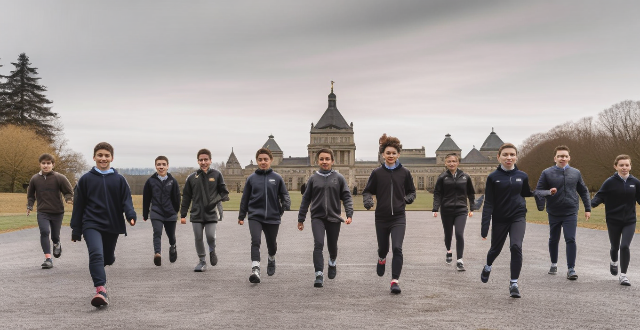
How do sports exchange programs contribute to cultural awareness and appreciation among youth ?
Sports exchange programs offer young athletes a platform to engage in cultural exchanges and foster cultural awareness and appreciation. These programs expose youth to different cultures, promote language learning, and include cultural exchange activities that break down cultural barriers. Additionally, sports exchange programs celebrate diversity, build lasting friendships, and encourage the embrace of cultural differences, contributing to a more harmonious global community.
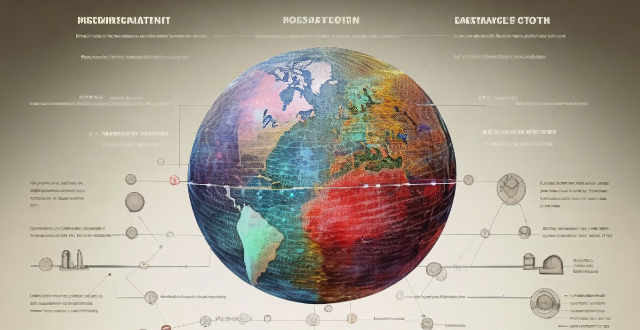
What are some successful examples of youth-led climate action initiatives ?
This article discusses successful youth-led climate action initiatives around the globe, highlighting examples like Fridays for Future, US Youth Climate Strike, and Earth Uprising. These movements have achieved significant milestones in raising awareness, inspiring policy changes, and fostering collective action towards addressing climate change.
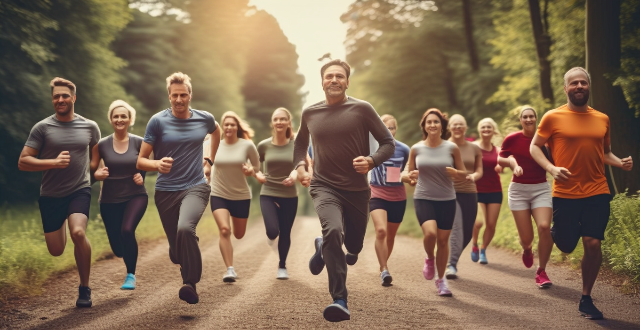
What is the role of youth activism in pushing for more robust global climate governance ?
The role of youth activism in pushing for more robust global climate governance is significant. Young people are acutely aware of the urgency of the climate crisis and bring a long-term perspective to the issue, recognizing that the choices made now will have far-reaching consequences for generations to come. They are often more open to new ideas and ways of thinking than older generations and are willing to embrace innovative solutions to complex problems. Youth activists are raising awareness about the severity of the climate crisis, influencing policy at all levels of government, and building international coalitions around climate action. Their efforts have led to significant progress in areas such as renewable energy, carbon pricing, and emissions reduction targets. As we face the challenges of the climate crisis, the voice and energy of youth activists will continue to be critical in shaping our response.

What role do international sports organizations play in promoting peace through sport ?
International sports organizations contribute significantly to promoting peace through various initiatives. These include building bridges and enhancing diplomatic relations by promoting diplomacy and cultural exchange, providing platforms for youth development through empowerment and creating opportunities, advocating for gender equality and inclusivity, contributing to humanitarian efforts like disaster relief and peace missions, and educating about peace and conflict resolution through awareness campaigns and partnerships with peace organizations.

How can sports diplomacy be leveraged to improve relations between nations ?
Sports diplomacy is a powerful tool for improving international relations by using sports as a universal language to break down barriers, promote peace, and foster understanding. This can be achieved through organizing international events and cultural exchange programs, supporting youth exchanges and community-based initiatives, involving influential sports figures in diplomatic missions, and utilizing media and public platforms to engage wider audiences. By leveraging the power of sports, nations can improve their relationships in a constructive and engaging manner, serving as a soft power strategy with far-reaching benefits.

How can we encourage more young people to participate in sports for peace initiatives ?
Encouraging young people to participate in sports for peace initiatives involves raising awareness, creating accessible opportunities, developing leadership skills, and celebrating achievements. This can be done through education, publicity, role models, inclusive sports programs, partnerships, funding, training workshops, volunteer opportunities, recognition awards, and community celebrations.

How do sports movies affect the recruitment and retention of young athletes in various sports ?
Sports movies have a significant impact on the recruitment and retention of young athletes in various sports. They inspire young people to take up sports, provide role models for them to look up to, and expose them to new sports they may not have considered before. Sports movies also help retain young athletes by providing motivation during tough times, building a sense of community among athletes, and helping them set goals for themselves. As such, sports movies should be considered an important tool for promoting youth sports participation and development.
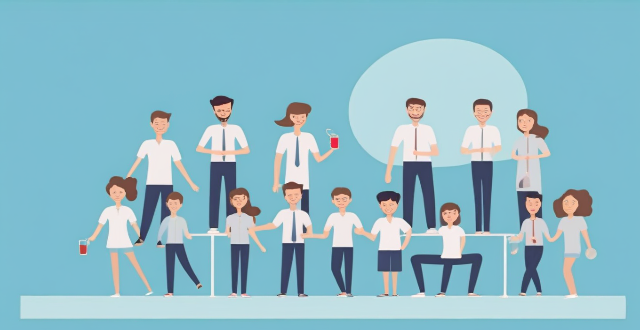
Can sports sponsorship help in promoting health and fitness among the general public ?
Sports sponsorship can promote health and fitness by increasing awareness, providing role models, enhancing accessibility, improving visibility, and offering educational opportunities. However, challenges such as commercialization concerns, equity issues, and sustainability must be addressed to ensure these efforts are equitable and focused on the well-being of all segments of society.

How effective are youth-led climate action campaigns ?
Youth-led climate action campaigns are effective in mobilizing young people, employing creative strategies, attracting media attention, influencing policymakers, and focusing on education and awareness.

What role does sports play in promoting cultural diversity and inclusion ?
Sports play a significant role in promoting cultural diversity and inclusion by breaking down barriers, educating about different cultures, building communities, and contributing positively to economic development.

What role do sports clubs and community centers play in promoting public health initiatives ?
Sports clubs and community centers significantly contribute to public health efforts by offering programs and services that encourage physical activity, provide educational opportunities, build social support networks, target specific demographics, and collaborate with health organizations. These establishments play a crucial role in promoting healthier lifestyles through their facilities, workshops, group activities, youth and senior programs, and partnerships with hospitals and awareness campaigns. By catering to diverse age groups and interests, sports clubs and community centers help foster a culture of health and wellness within communities.

How do multinational corporations influence the marketing and commercialization of sports globally ?
Multinational corporations (MNCs) significantly impact the marketing and commercialization of sports globally. They provide financial support through sponsorships and partnerships, increase accessibility by acquiring broadcasting rights, produce merchandise, contribute to infrastructure development, drive technological innovation, engage in social impact initiatives, employ sophisticated marketing strategies, and promote a global sports culture. Their extensive resources and worldwide reach enable them to shape various aspects of the sports industry, from enhancing performance and visibility to expanding audiences and generating revenue.

What are the benefits of promoting sports in rural areas ?
Promoting sports in rural areas can lead to improved physical health, social development, and economic growth. Encouraging sports participation can increase physical activity, reduce the risk of chronic diseases, and improve mental health. Sports can also foster a sense of community, develop youth skills, and promote gender equality. Additionally, hosting sporting events can attract tourism, create job opportunities, and improve infrastructure. Overall, promoting sports in rural areas can contribute to the well-being and development of the community.

How do cultural exchanges through sports influence international relations ?
Cultural exchanges through sports have a significant impact on international relations by promoting mutual understanding, enhancing diplomatic relations, promoting peace and unity, providing economic and social benefits, increasing globalization, and presenting potential challenges such as nationalism and commercialization concerns. These exchanges foster understanding, build bridges between nations, and contribute to a greater sense of global community.

What role can local governments play in promoting sports and rural revitalization ?
Local governments can promote sports and rural revitalization by building sports facilities, offering affordable programs, supporting grassroots organizations, encouraging volunteerism, hosting sports events to attract tourism, and using sports marketing to support local businesses.

What are the benefits of promoting sports in underprivileged communities ?
The text discusses the benefits of promoting sports in underprivileged communities, including improved health and well-being, educational opportunities, community building, and economic development. It emphasizes that sports programs can enhance physical and mental health, provide academic support and life skills, foster social cohesion and civic engagement, and create jobs and attract businesses. It concludes that recognizing and supporting sports initiatives in underprivileged communities is essential for their transformative impact.

What are the benefits of youth participation in climate change initiatives ?
Youth participation in climate change initiatives is crucial for several reasons. Here are some of the benefits: ### 1\. **Education and Awareness** - **Increased Knowledge:** Young people who participate in climate change initiatives gain a deeper understanding of the science behind climate change, its causes, and potential solutions. This knowledge can be used to make informed decisions about their own lives and advocate for change in their communities. - **Awareness of Environmental Issues:** Through participation, youth become more aware of environmental issues such as deforestation, pollution, and biodiversity loss. This awareness can lead to lifestyle changes that reduce their carbon footprint and inspire others to do the same. ### 2\. **Skill Development** - **Leadership Skills:** Participating in climate change initiatives often involves working with teams, planning events, and advocating for change. These experiences help young people develop leadership skills that will be valuable throughout their lives. - **Communication Skills:** Climate change initiatives require effective communication to raise awareness, share information, and persuade others to take action. Participating in these initiatives helps young people develop strong communication skills that will benefit them in all areas of life. ### 3\. **Policy Influence** - **Voices Heard:** Young people represent a significant portion of the population and have unique perspectives on climate change issues. By participating in initiatives, they can ensure that their voices are heard by policymakers and influence policies related to climate change. - **Advocacy Efforts:** Youth involvement in climate change initiatives often includes advocacy efforts aimed at convincing governments and businesses to adopt more sustainable practices. These efforts can lead to real change on a local, national, or even global level. ### 4\. **Personal Growth** - **Sense of Purpose:** Participating in climate change initiatives can give young people a sense of purpose and motivation to make positive changes in the world around them. This sense of purpose can lead to greater satisfaction with life and increased mental well-being. - **Confidence Building:** Successfully participating in climate change initiatives can build confidence and self-esteem by showing young people that they have the power to create positive change in their communities and beyond. ### 5\. **Networking Opportunities** - **Connections with Like-Minded Individuals:** Participating in climate change initiatives provides opportunities for young people to connect with others who share their passion for environmental protection and sustainability. These connections can lead to lasting friendships, collaborations, and professional opportunities down the line. - **Mentorship Opportunities:** Many climate change initiatives involve working alongside experienced professionals who can serve as mentors and provide guidance on career paths related to environmental protection and sustainability.
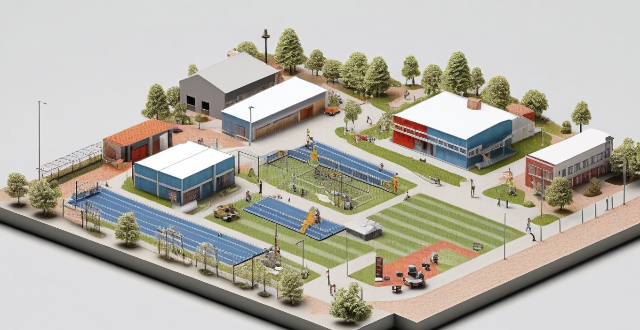
How do sports events promote interfaith understanding and cooperation ?
Sporting events serve as a platform for promoting interfaith understanding and cooperation by breaking down barriers, encouraging dialogue, building partnerships, and promoting peace. Through shared passion for sports, principles of sportsmanship, mixed teams, celebration of diversity, joint community projects, interfaith leagues, peace through play initiatives, and role models, sports events can contribute to a more harmonious society where interfaith cooperation is the norm.

What are the best sports careers for someone who loves competition ?
Competitive individuals have various sports career options, including professional athlete, coach/manager, sports analyst/journalist, referee/umpire, personal trainer/fitness instructor, sports agent/manager, and event planner/promoter. Each path offers unique opportunities to thrive on competition and excel in the sporting world.

Can you suggest ways to combine sports and charity work effectively ?
Combining sports and charity work is an effective way to make a positive impact on society while also promoting physical activity and healthy living. By organizing charity sporting events, partnering with charities to support their mission through sports, and using sports as a platform for awareness and education about important issues, we can create a powerful force for good that benefits people in need while also fostering a sense of community and teamwork within the sports world.

How can sports contribute to rural revitalization ?
Sports have the potential to significantly contribute to rural revitalization by enhancing community engagement, promoting health and wellness, and stimulating economic growth. Here are some ways in which sports can play a crucial role: ## Community Building and Engagement ### **Boosting Morale and Unity** - **Festivities and Events:** Sporting events often become festive occasions where people from different backgrounds come together to support their local teams. This fosters a sense of community and belonging. - **Common Goals:** The pursuit of victory in sports creates a shared objective that unites residents and encourages collective effort and pride. ### **Youth Development** - **Skills and Discipline:** Participation in sports teaches young people valuable life skills such as discipline, teamwork, and leadership. - **Positive Outlets:** Sports provide youth with constructive activities, keeping them away from idleness and potential negative influences. ### **Social Inclusion** - **Breaking Down Barriers:** Sports can help to break down social barriers, integrating marginalized groups into the wider community. - **Intergenerational Activities:** Sports can involve people of all ages, from children to the elderly, creating intergenerational connections. ## Health and Wellness Promotion ### **Physical Activity** - **Fitness and Health:** Engaging in sports improves physical fitness, reducing the risk of various health issues like obesity, heart disease, and diabetes. - **Mental Health:** Exercise releases endorphins, contributing to reduced stress levels and improved mental health. ### **Healthy Lifestyle Habits** - **Nutrition Awareness:** Athletes and those involved in sports often pay more attention to nutrition, inspiring others to follow suit. - **Preventive Care:** The emphasis on physical well-being through sports can lead to greater awareness of preventive healthcare measures. ## Economic Stimulation and Development ### **Tourism and Revenue** - **Sporting Events:** Attracting tournaments and competitions can bring tourists to rural areas, providing a significant boost to local businesses. - **Retail Opportunities:** Sports fans often purchase related merchandise, supporting local retailers and entrepreneurs. ### **Infrastructure Development** - **Facilities Construction:** Building sports facilities can create jobs during construction and provide long-term employment opportunities. - **Public Works:** Improved roads, parking lots, and other public works may be developed in conjunction with sports venues to serve both athletes and the general public. ### **Employment Generation** - **Coaching and Training:** As interest in sports grows, there will be increased demand for coaches, trainers, and other sports professionals. - **Support Services:** Hotels, restaurants, transportation services, and other businesses benefit from an increased need for support services during sporting events. ## Cultural Preservation and Identity ### **Traditional Sports** - **Cultural Heritage:** Some sports have deep cultural roots in rural communities and can be preserved and promoted as part of local heritage. - **Community Pride:** Successful local teams or athletes can become symbols of community pride and identity. ### **Educational Programs** - **School Curricula:** Incorporating sports programs into schools not only benefits students physically but also educationally by teaching them about their cultural history through sports. - **Community Workshops:** Hosting workshops on traditional sports can engage the community and preserve intangible cultural heritage.

What are some examples of successful initiatives that use sports to promote social inclusion ?
This text discusses successful initiatives that use sports to promote social inclusion. It highlights five examples of such initiatives: Street Football World, Homeless World Cup, Wheelchair Basketball Initiatives, Sporting Equals, and Gender Equality in Sports Programs. These initiatives aim to unite people through football, inspire homeless people, promote disability inclusion, challenge discrimination in British Asian communities, and encourage women's participation in various sports, respectively. The activities include global tournaments for marginalized communities, international tournaments for homeless teams, local wheelchair basketball leagues, community cricket events, and women's sports leagues. The impact of these initiatives is significant, with increased public awareness about homelessness, personal transformation stories of participants, improved physical fitness and self-esteem among disabled individuals, reduced instances of racism and discrimination in sport, and higher visibility and recognition of women in sports.
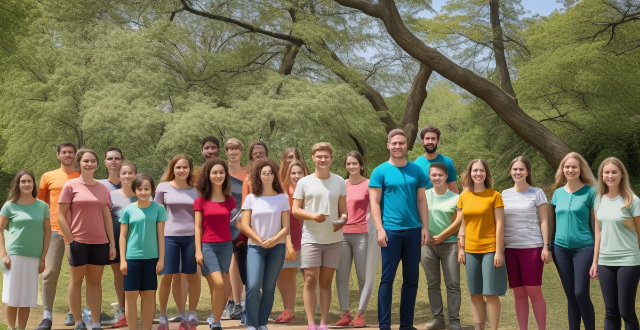
What are some successful examples of sports-based community development initiatives ?
Sports-based community development initiatives have been successful in various parts of the world, bringing people together and fostering a sense of community. Some notable examples include Sport for Social Impact, Right to Play, Sport and Recreation Victoria, and Sport England. These organizations use sports to tackle social challenges such as poverty, gender inequality, lack of education, and physical inactivity. Their programs range from soccer games promoting peace in Israel and Palestine to after-school programs teaching life skills in areas affected by war, poverty, and disease. These examples demonstrate the power of sports-based community development initiatives to bring people together, promote health and well-being, and address social challenges.

How much do sports coaches earn on average ?
The article discusses the factors affecting sports coaches' salaries, including the level of competition, the sport, and the location. It also provides average salary ranges for professional, college, high school sports coaches, and personal trainers/fitness coaches. Finally, it suggests ways to increase earnings as a sports coach, such as gaining more experience, specializing in a niche area, or starting your own business.